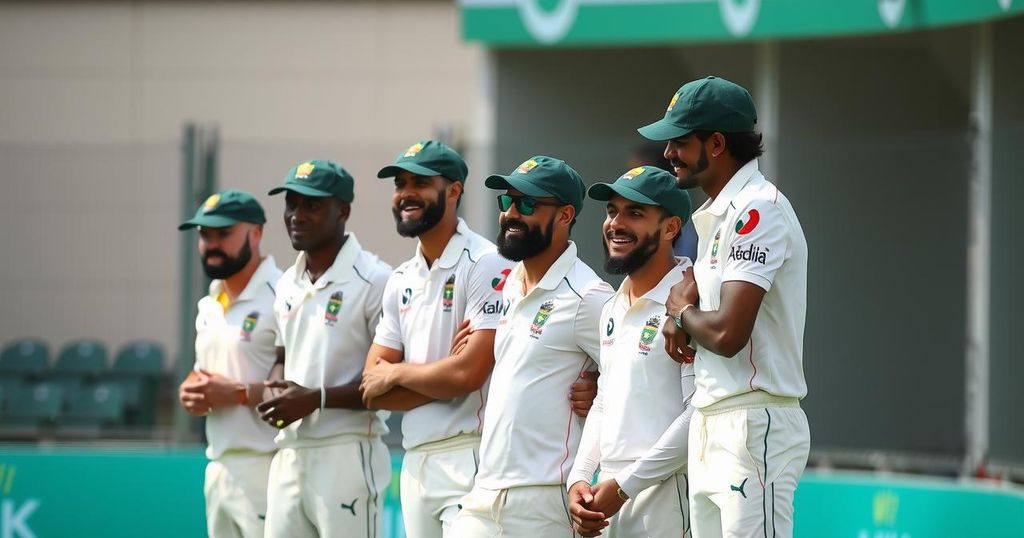Zimbabwe won the toss and chose to bowl first in the second Test against Afghanistan after a rain delay. Changes in both teams were notable, with Zimbabwe replacing two players while Afghanistan introduced five newcomers, including debutants. The pitch conditions, marked by moisture and grass, are expected to favor bowlers.
In a highly anticipated second Test match against Afghanistan, Zimbabwe opted to bowl first after winning the toss, showcasing confidence in the conditions of the pitch in Bulawayo. This decision came after a prolonged delay due to rain and wet outfield conditions. Zimbabwe captain Craig Ervine indicated notable changes to their playing XI, with legspinner Brandon Mavuta and fast bowler Trevor Gwandu being replaced by Sikandar Raza and Richard Ngarava. Ervine expressed optimism regarding the pitch’s conditions, stating, “Overhead conditions suit the bowling,” and conveyed his hopes for moisture and grass on the surface to aid the bowlers’ performance.
On the other hand, Afghanistan made five alterations to their team, including introducing debutants Fareed Ahmad, Riaz Hassan, and Ismat Alam. Captain Hashmatullah Shahidi also preferred to bowl first, acknowledging that the pitch appeared “a little spicy,” fitting the narrative of competitive play. The strategic changes made by both teams underscore the unpredictable nature of Test cricket, particularly in the context of adverse weather conditions.
The opening Test between these two teams had set records, with both sides achieving their highest scores in Test history, showcasing the talent within their ranks. The match, which concluded in a thrilling draw, featured six centurions and two double-centurions, further raising expectations for this ongoing clash.
This article discusses the dynamics of the second Test match between Zimbabwe and Afghanistan, highlighting the decisions made by both teams at the toss and the implications of those choices. The context revolves around the pitch conditions in Bulawayo, which were affected by recent rain, influencing both teams’ selections and strategies for the match. Historical performance in the opening Test illustrates the teams’ potential.
In conclusion, Zimbabwe’s decision to bowl first in the second Test against Afghanistan, influenced by weather conditions and team changes, was met with strategic adjustments from both sides. The match anticipates competitive play, reflective of their previous encounter that saw remarkable scoring feats. With the playing XI altered and conditions conducive to fast bowling, spectators can expect an engaging contest looming ahead.
Original Source: www.espncricinfo.com






